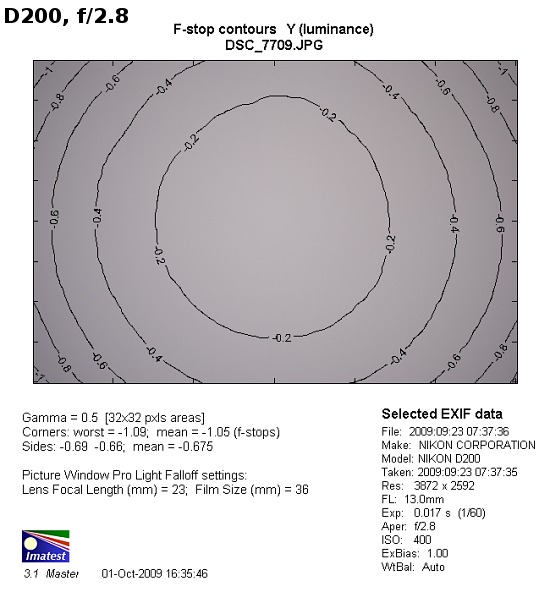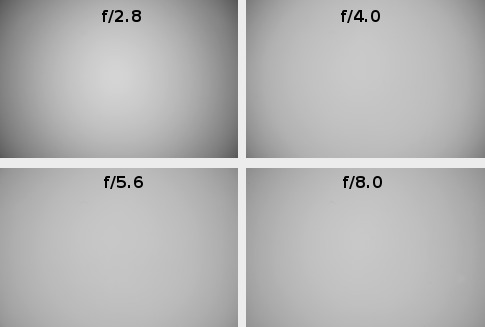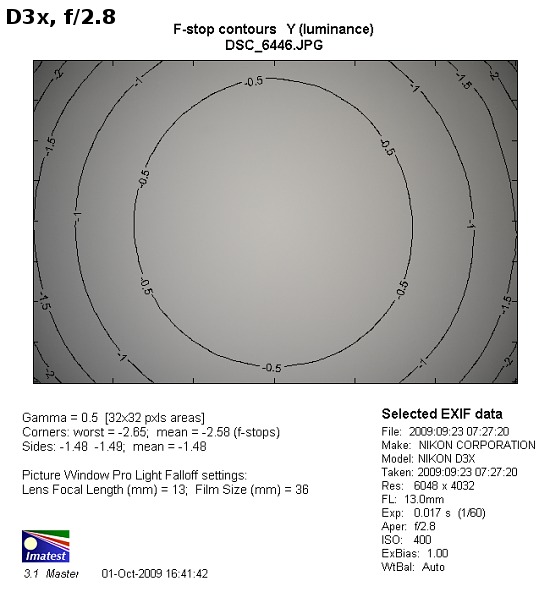Samyang 14 mm f/2.8 IF ED MC Aspherical
8. Vignetting

 |
Please Support UsIf you enjoy our reviews and articles, and you want us to continue our work please, support our website by donating through PayPal. The funds are going to be used for paying our editorial team, renting servers, and equipping our testing studio; only that way we will be able to continue providing you interesting content for free. |
- - - - - - - - - - - - - - - - - - - - - - - - - - - - - - - - - - - - - - - - - - - - - - - -
When we move to a full frame, the problem- no real surprise here- increases dramatically. However, we need to maintain the scale of this phenomenon. Zeiss 16-35 mm, at the most difficult combination of 16 mm focal length and f/2.8 aperture, lost 65% of light in the corners. In this perspective, the result of 59% (-2.58 EV) recorded by Samyang at the maximum aperture doesn’t look so bad. Stopping down on a full frame doesn’t solve the problem as fast as on a small sensor. At f/4.0 the light falloff in the corners of the frame equals 40%, and at f/5.6 still 29%. What’s more, further stopping down makes vignetting decrease very slowly, about 2 % for each aperture value at most.

 |






